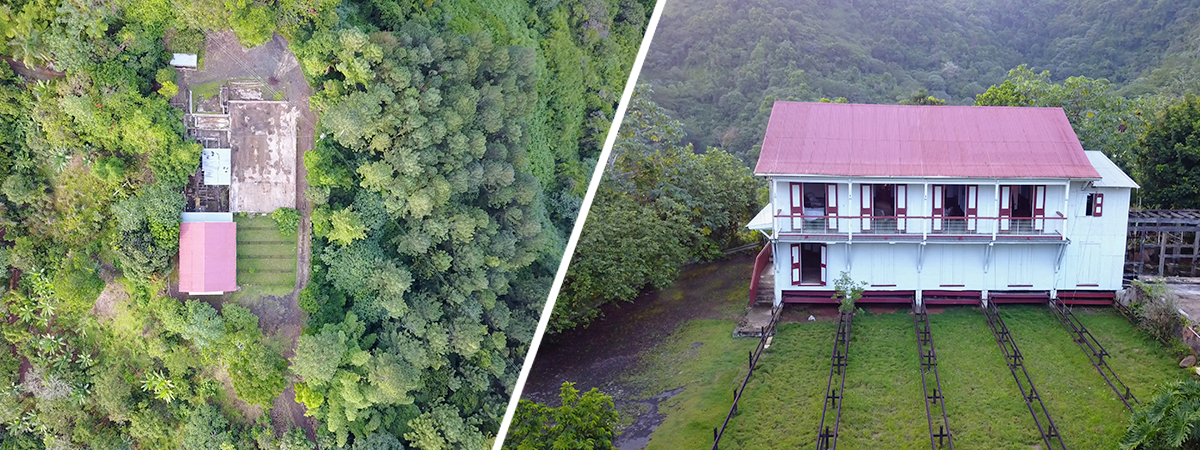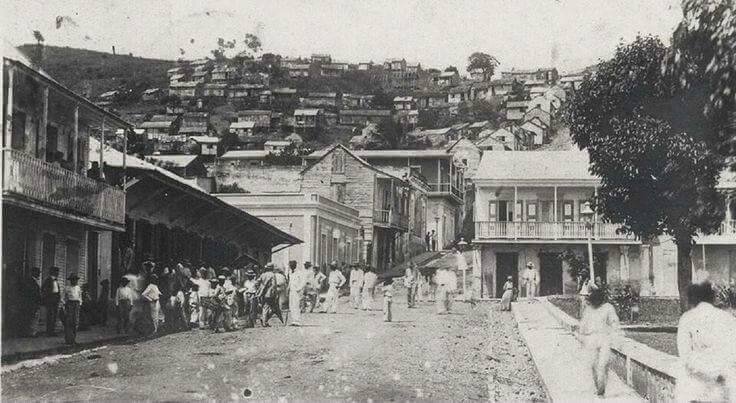
CASONA
Spanish Haciendas were large estates that combined dwelling with commodity production. Their large Casonas were crafted masterpieces, applying concepts evolved over centuries to unique conditions in order to host daily life, produce and store goods, house guests and seasonal workers, put on grand events, and more. The few Casonas that remain are living legacies of historical design, material, and craft.
The Casona at Hacienda Masini was constructed in the 1860’s and has been adapted over time as needs and storms arise. It still serves its original functions of dwelling and coffee production in the highlands. Design and details of the Casona are oriented toward social life, structural support, and coffee production. They are irreplaceable testaments to the richness of skills and environment that the early Corsicans encountered and adapted.
Explore the history of Hacienda Masini’s Casona and its unique lens into the connections between environment, culture, and design that have helped build Puerto Rico’s coffee culture.
Brothers Domingo Felipe (1834-1899) and Pablo Francisco (1844-1909) Pietri emigrated to Yauco from Olmeta-di-Capocorso, Corsica in 1857 and 1868 to settle lands offered to supporters of the Spanish Crown. Domingo Masini Pietri (1869-1928) and Juan Masini Pietri (1873-1937) followed their uncles from Corsica to Yauco in the 1880’s to help their uncles manage the farm that would become Hacienda Masini. (Source: LOC)
Yauco Pueblo provided an important resource for exchange and social life in the late 1800's. A skilled rider on a good horse could make the winding 50 kilometer roundtrip in one day, but business and prudence often led to lodging and a fresh day's climb back into the mountains. Notice the similarity of the building facing the camera on the right to the Casona. This Spanish Colonial Style is common across Yauco but wood buildings are largely gone.
Constructed in the 1860’s as part of ‘Hacienda La Rubia’ for Silvestre Fraticelli, the Hacienda and Casona was acquired by the Masini family in the 1870's. The Casona's material 'bones' are largely unchanged from this photo taken in the early 1920’s, however the side building to the left and the roof were removed by Hurricane Felipe Segundo in 1928. The Casona survived and was fitted with its more structurally-sound current roof.
The Corsican immigrants' skillfully adapted European carpentry to island terrain and materials and built strong structures well suited for the highlands' extreme conditions. In 1924 Juan Masini Pietri cofounded the Cooperativa Cafeteros de Yauco to improve Yauco caficultores' resources, quality, and conditions for coffee culture.
As coffee modernized into the late 20th century, it spurred a second coffee technological revolution: new technologies, heated dryers, power sources, synthetic fertilizers, and chemical weed and pest controls all pushed productivity, but could not overcome challenges of depopulation, disease, and global labor shifts.
In the 1960's the farm began to expand its nursery operations, developing practices and expertise that have ensured Hacienda Masini is at the forefront of quality and innovation. Now the farm is pivoting to total agriculture, expanding into agroforestry to integrate food and other valued crops into the farm's existing systems, hoping to help the island with food and resource independency.
At the close of the 20th century, the farm faced challenges of disease, decay, management, and coffee viability. Starting in 1996, Angela Masini took ownership and began conservation and agricultural factions, began the current charge starting in 1996
In bad repair and no longer used, guest quarters and processing space was deconstructed and salvaged to repair other damaged sections. The preservation of this legacy requires skilled craftspeople, endemic materials, and commitment to sustaining original techniques and practices.
In 2017 the farm was on track to realize its most significant yields in decades when Hurricane Maria destroyed nearly everything. In addition to near total loss of all plants, hundreds of landslides wiped out water and power lines and prevented access to harvest damaged crops. We are thankful to our neighbors and friends who have helped us regain footing after Maria. (Source: Remy Rodriguez)
Today, Hacienda Masini operates as a highland center for enlightened coffee research, culture, and community. By combining conservation with experimentation, Hacienda Masini is helping grow a resilient future for Puerto Rico. We are actively experimenting with soil conservation, erosion control, coffee agro-forestry systems, climate-smart coffee, and education.
The main casona, consisting of an upper formal house joined ingeniously to a lower coffee processing infrastructure, has been the heart of living and coffee operations for seven generations. In 2021, the upper house will be opened for extraordinary stays. Receive notice by signing up here.
Today, Hacienda Masini operates as a specialty coffee nursery and producer, growing plants for area farmers and producing small batches of specialty coffee with commitment to the highest standards in product quality, fair practices, and land stewardship.
"La Ruta Lenta..." Hacienda Masini embraces slow tourism and its ideas and approaches to sustainable tourism. We support an experience that integrates destination with travel and approach, and conservation with education and recreation.
An endings starts... A start ends... Hacienda Masini, 2021















